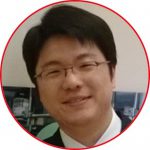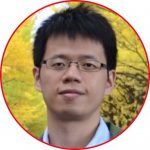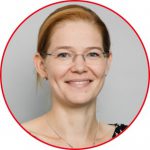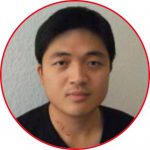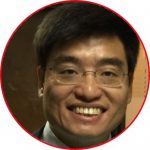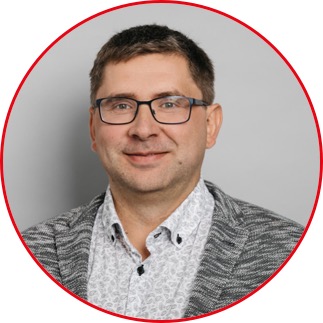
Leibniz Institute of Photonic Technology, 07745 Jena, GERMANY
Silicon Nanostructures from Hydrogen Generation to Nanomedicine
Hydrogen is regarded to be one of the most promising green energy source in the Industry 4.0. One promising approach to produce hydrogen is photocatalytic water splitting. Herein, I report the top-down formation of porous silicon nanostructures with a sufficient large optical band gap to drive the photocatalytic hydrogen production. The high porosity leads to an increased active surface area and also to an enlarged optical band gap. XANES investigations near the L2,3 core level of silicon and K core level of oxygen as well as XPS studies were performed at the Helmholtz Zentrum Berlin (BESSY II) with the use synchrotron radiation at the Russian-German beamline. The highly porous silicon nanostructures show an optical band gap of up to 1.8-2.3 eV. Furthermore, we observed an increased hydrogen production under additional light irradiation with generation rate of 20,000µl/h at least for the first 4 hours.[1, 2]
The targeted scientific breakthrough is a study of controlled self-organized process of nanosized structures based on porous silica or alumina on silicon surface systems where dielectric pores are selectively filled by plasmonic-active metals (silver and gold) for a formation of dimensionally divided plasmonic nanostructures. The spatially separated plasmonic nanostructures have been synthesized using heavy ion track technology and self-organization of metal atoms in the closed volumes. The first pre-tests of these nanostructures in Raman scattering spectroscopy have been performed. The first data indicates the possibility of detecting ultra-small concentrations of the Ellman’s reagent on silver dendritic nanostructures, the detection limit of 10-15 M was achieved that corresponds that Raman signal enhanced above 13 orders of magnitude. The detecting ultra-small concentrations of the bilirubin on gold nanostructures, the detection limit of 10-9 M, was achieved. The foregoing allows us to conclude that spatially separated plasmonic nanostructures in the pores of the SiO2 template on silicon are a new promising effective plasmon active surfaces for SERS, which are of record high sensitivity and can find application in chemo- and biosensorics. [3, 4]
Cancer diagnostic and therapy challenge the scientific community to design research addressing the urgency of ending cancer. I intend here to carry out an ambitious topic including development and in vitro testing of biocompatible silicon-based nanostructures for cancer therapy and diagnostics. [5-7]
References
- S. Yu. Turishchev, E. V. Parinova, A. K. Pisliaruk, D. A. Koyuda, D. Yermukhamed, T. Ming, R. Ovsyannikov, D. Smirnov, A. Makarova, V. Sivakov, Scientific Reports 9, 8066 (2019).
- S. Yu. Turishchev, E. V. Parinova, D. N. Nesterov, D. A. Koyuda, V. Sivakov, A. Schleusener, V. A. Terekhov, Results in Physics 9, 1494-1496 (2018).
- D. Yakimchuk, E. Kaniukov, V. Bundyukova, L. Osminkina, St. Teichert, S. Demyanov, V. Sivakov, MRS Communications 8(1), 95-99 (2018).
- O. Žukovskaja, S. Agafilushkina, V. Sivakov, K. Weber, D. Cialla-May, L. Osminkina, J. Popp, Talanta 202, 171-177 (2019).
- E. Tolstik, L. A. Osminkina, Ch. Matthäus, M. Burkhardt, K. E. Tsurikov, U. A. Natashina, V.Y. Timoshenko, R. Heintzmann, J. Popp, V. Sivakov, Nanomedicine, 12(7) 1931-40 (2016).
- Shevchenko, Svetlana; Burkhardt, Markus ; Sheval, Eugene ; Natashina, Ulyana ; Große, Christina; Nikolaev, Alexander ; Gopin, Alexander ; Neugebauer, Ute ; Timoshenko, Victor; Vladimir, Sivakov; Osminkina, Liubov, Langmuir 33, 2603−2609 (2017).
- M. Gongalsky, G. Gvindzhiliia, K. Tamarov, O. Shalygina, A. Pavlikov, V. Solovyev, A. Kudryavtsev, V. Sivakov, L.A. Osminkina, ACS Omega 46, 10662-10669 (2019).
